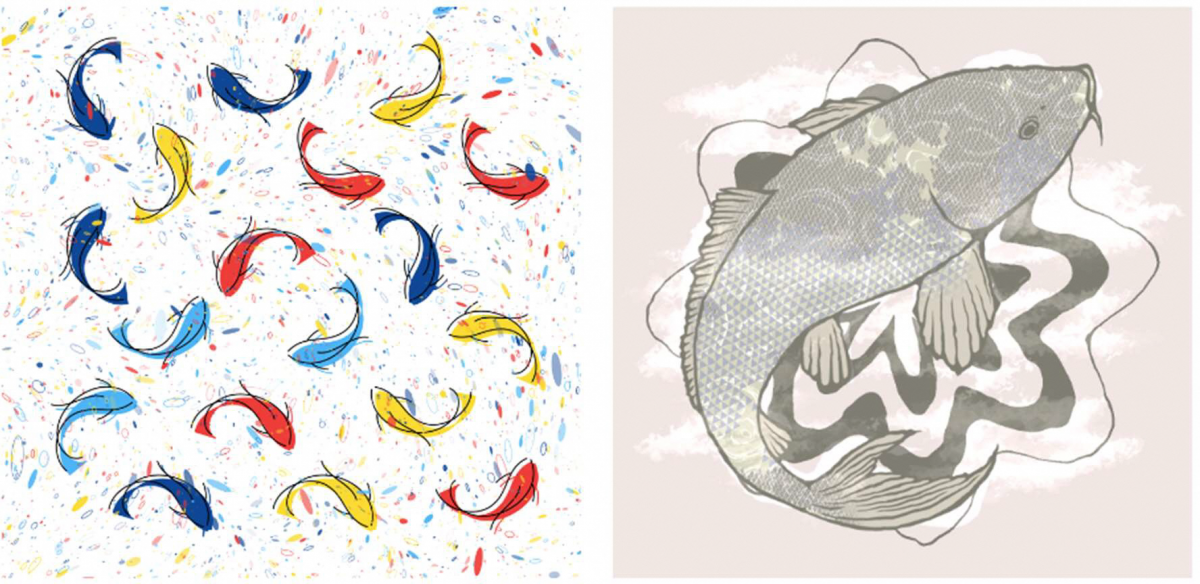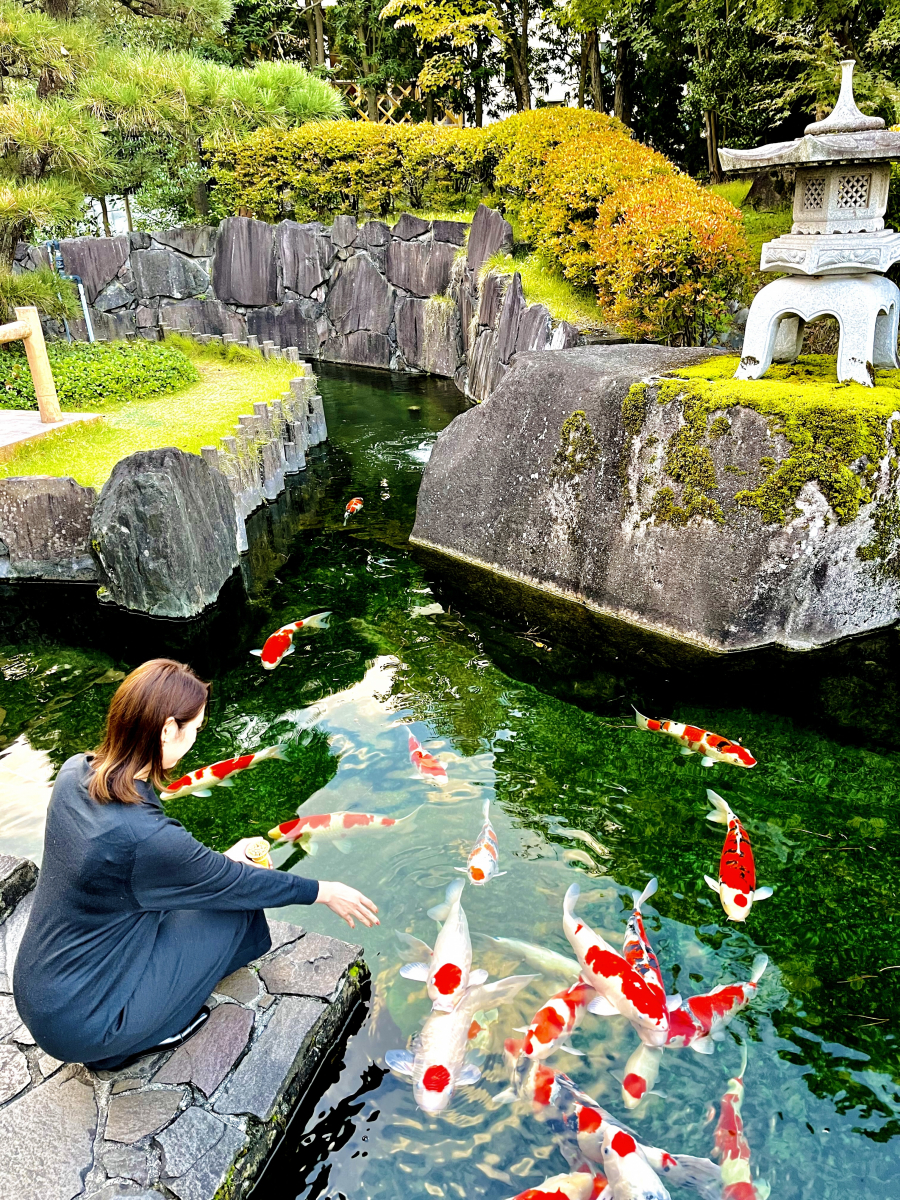
“THE CARP OF NIIGATA, NISHIKIGOI, HAS CAPTURED THE ATTENTION OF An OVERSEAS MILLIONAIRE. WHY?”
2022.11.21Niigata , the birthplace of a multicolored carp, NISHIKIGOI, a swimming jewel
A multicolored carp first appeared in the days of the Edo era: in early 19th century, in the area called the “20(twenty) Village Community. “(part of the present Ojiya city and Yamakoshi , Nagaoka City) in Niigata Prefecture, where the local have established a unique cultural zone with similar shared cultural aspects. The area is one of Japan’s most secluded regions.
The carp in the “20 Village Community. “Was an edible specie but it later changed color due to mutation. Carps now have beautiful colors due to continuous efforts to enhance the colors.
The locally produced multicolored carps have attracted the attention of overseas millionaires. Many foreign buyers who are looking for the beautiful carps are attending a competitive exhibition in Niigata. Why?
The carp was raising as a source of protein, can be an important food supply in winter, and the basics of current joint system of rice farming and carp raising.
The “20 village Community. “Has heavy snowfall, which usually accumulate and
reaches heights of over four meters. Also, the community in a harsh mountainous, the
people were isolated during winter. The carp was raising as a source of protein, can
be an important food supply in winter.
The fry is released into the rice paddies after rice planting. The juveniles quickly fertilized the feed of daphnia and silkworms, swam vigorously among the rice plants, and played a role in preying on pests and aquatic plants with their vigorous appetite.
The fry eventually grows into annual carp with a body length of 15~16 cm during the autumn season. Once wintered in the pond, the carp were released into paddy fields with the fry and shipped as carp. Such a scene was practiced in most of the terraced paddy fields, mainly in this area. The terraced carp ponds and the terraced rice fields are part of the original landscape of this part of Japan, and it is a historical heritage.
The carp later changed color due to mutation, and Beginning of Breeder .Their continued strenuous efforts helped NISHIKIGOI become a global business.
Various efforts in improving crossbreeding and raising the multicolored carp have been
made since the prototypes first appeared in 19th century. Crossbreeding technology
improved and set up the foundation of the present day of the multicolored carp.
“Such a place in the world. Because of the earnest carp breeders in the “20 village Community. “, carp breeding culture is still very much entrenched in the present age.
That‘s answer why the carp of Niigata , has captured the attention of an overseas millionaire.
Today, Japan NISHIKIGOI is attracting attention as the "NISHIKIGOI of the world" and is gaining popularity. In the future, not only Japan but also overseas NISHIKIGOI lovers will increase more and more.
A journey to feel the “nature”, “hot springs”, “food” and “history” of the villages of NISHIKIGOI
Getting in touch with the tempo of the village daily life. You can have a nice time in the 20 villages community from ORATARU where you get a local map. As you bike leisurely through this beautiful farming village, take in the seasonal progressions of a special way of life handed down over generations. The self-guided tour is mostly through farmland with limited views. If you wish the ride would have ended with better views, or that you have a guide who could explain some of the local farming sites that you saw and didn't have any information about. It is probably worth paying a bit more to do the guided trip if you have time to do it.
NISHIKIGOI lays about 500,000 eggs in a single spawning session, but only a few of them can grow into beautiful shapes and win excellent awards at competitions. How do you grow that tiny NISHIKIGOI to have a beautiful body? To grow NISHIKIGOI with a beautiful body shape, they are raised freely in a mud pond called "NOIKE" from spring to autumn while avoiding stress. If they grow NISHIKIGOI in this "field pond", they can directly get a lot of sunlight, so the color of the ground skin will improve.
Therefore, the water quality of the pond is kept alkaline and oyster shells are put into the pond, but if the water quality of the pond becomes acidic, the color will fade. In addition, to improve the luster of the skin, it gives the pupa of the silkworm.
NISHIKIGOI grown in the pond from spring grow into an ideal beautiful body shape when it is time to pull up in autumn, and females are priced about 10 times more than males.
Talking with locals, and especially tasting the delicious local products of villages.
It can deliver seasonal scenery such as fresh green in summer, autumn leaves in autumn, and snowy scenery in winter.
Nagaoka is city or Ojiya, on the middle reaches of Niigata Prefecture, a hub of rail and road transportation and serves as a base for the popular ski grounds on nearby Gala Yuzawa.


About Digital Villager NISHIKIGOI NFT ~yamakoshi~
Looking to create a unique autonomous community and place with 800 real residents and 10,000 global digital residents coming together. Although the village itself is in the
deep mountains of Japan and has related to the world through the colored carp
industry, now it will be the first attempt in the world to create a virtual village
"Yamakoshi" that is even more globally open to the world with the Colored carp NFT.
This NFT is a "sign of empathy and camaraderie," and we refer to NFT holders as
"digital villagers." Currently, about 950 digital villagers have been born, and the challenge of creating the future of Yamakoshi has begun with real Yamakoshi and digital villagers together.


Ojiya Nishikigoi no Sato ~Facility for the tourist~
Ojiya Nishikigoi no Sato is the only place in the world where a wide variety of live Nishikigoi are on display along with the materials showing the history of their improvements.
You can also try feeding experience at the Japanese styke gareden here.
*In winter season, the Japanese garedn is closed because of anow fall.you can see Nishikigoi and try feeding experience at the pool inside of the facility.
Check the spot information!

















